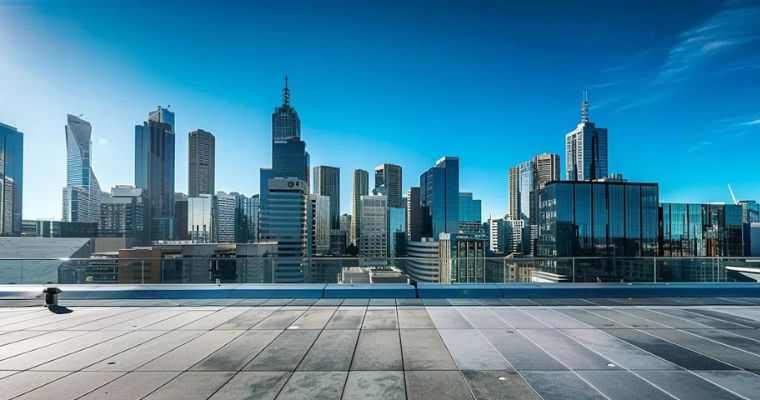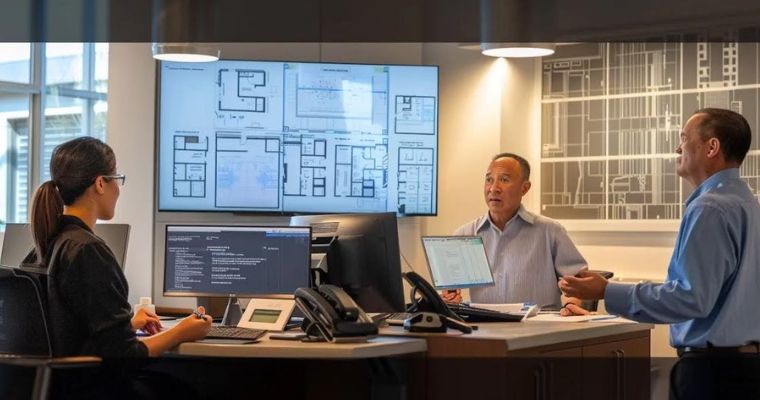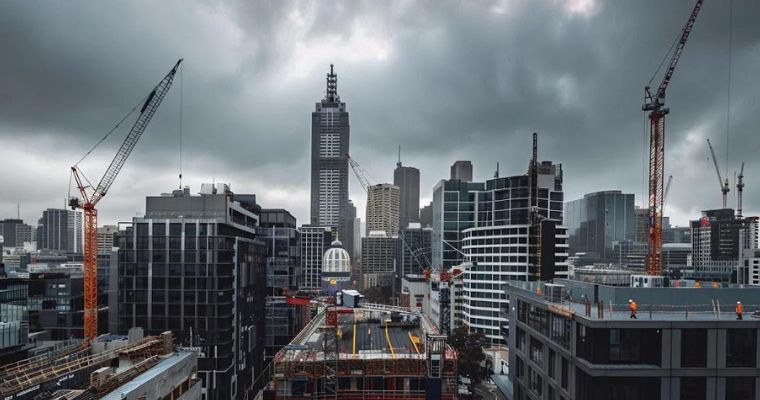Get free quotes within minutes
Roof Replacement Melbourne: Complete Guide to Costs, Materials, and Process

Table Of Contents
- Introduction
- How Much Does Roof Replacement Cost in Melbourne?
- What Are the Best Roofing Materials for Melbourne Roof Replacement?
- What Is the Roof Replacement Process in Melbourne?
- How to Choose the Right Roofing Contractor in Melbourne?
- What Are Melbourne’s Building Codes and Regulations for Roof Replacement?
- What Are Common Roof Replacement Challenges in Melbourne?
- Why Choose Sydney Bathroom Transformations for Your Renovation?
- Final Thoughts
This guide offers Australian homeowners a clear overview of roof replacement in Melbourne. It discusses costs, materials, processes, and challenges, helping you make informed decisions when planning your roofing project. Whether your roof suffers from wear and tear, water damage, or simply needs an upgrade for better energy efficiency, this guide covers key factors that impact price, materials suited to Melbourne’s climate, steps in the replacement process, and tips for selecting a reliable contractor. For additional information or assistance, please contact your local roof replacement experts in Melbourne.
How Much Does Roof Replacement Cost in Melbourne?
Roof replacement costs in Melbourne depend on the roof’s size, materials, labour fees, and additional services. Basic asphalt shingle replacements can be less expensive, while custom tile or metal roofs typically cost more. Factors such as roof design complexity, fascia replacement, or gutter upgrades can increase the overall expense.
What Factors Influence Roof Replacement Prices in Melbourne?
Several elements affect the final cost:
- Roof Size and Pitch: Larger and steeper roofs require more materials and labour.
- Material Quality: Higher-end materials like metal, slate, or tile cost more but offer longer durability and superior performance against Melbourne’s weather conditions
- Labour Charges: Contractors’ fees vary with market demand and location.
- Additional Services: Removal and disposal of the old roof, underlayment, and compliance with building codes (including dealing with hazardous materials like asbestos) also impact pricing.
How to Get Accurate Roof Replacement Quotes in Melbourne?
To obtain accurate quotes:
- Schedule Onsite Inspections: Multiple inspections by accredited contractors help assess the actual condition of the roof.
- Request Detailed Quotes: Ensure estimates include breakdowns for materials, labour, disposal fees, and any extra work (such as underlayment installation).
- Verify Credentials: Ask for references, verify contractor licenses, and review previous projects.
- Use Online Reviews: Platforms and local review sites can provide insights into customer satisfaction and service quality.
Are There Financing Options for Roof Replacement in Melbourne?
Financing can ease the financial burden:
- Flexible Payment Plans: Many contractors offer these.
- Home Improvement Loans: Financial institutions provide loans or lines of credit.
- Home Equity Loans/Refinancing: These options may secure lower interest rates.
- Government Incentives: Energy-efficiency rebates or grants might be available if the new roof meets environmental standards. Discuss options with your contractor and a financial advisor to find the most cost-effective solution.
What Are the Best Roofing Materials for Melbourne Roof Replacement?
Choosing the right roofing material is essential for long-term performance and visual appeal in Melbourne’s variable climate. Materials differ in durability, maintenance needs, energy efficiency, and warranty conditions. The most popular choices include tile roofing, metal roofing, slate, and asphalt shingles.

What Are the Benefits of Tile Roof Replacement in Melbourne?
Tile roofing, made from clay or concrete, is durable and attractive:
- Longevity: Resistant to weathering and UV exposure.
- Fire Resistance: Tiles naturally resist fire.
- Ventilation: Their modular design helps regulate indoor temperatures.
Although repair costs for individual tiles can be high, tile roofs offer lower long-term maintenance costs and improved energy efficiency.
Why Choose Metal Roofing for Your Melbourne Home?
Metal roofs are a popular modern choice due to:
- Resistance to Weather Extremes: They handle heavy rains and high winds effectively.
- Energy Efficiency: Their reflective surfaces reduce cooling costs.
- Lightweight and Durable: Easier installation and lower structural stress.
- Low Maintenance: Minimal upkeep and long lifespan, which may reduce home insurance premiums. Despite a higher initial cost, metal roofs provide excellent long-term value and sustainability.
How Does Slate Roofing Perform in Melbourne’s Climate?
Slate roofing combines elegance with performance:
- Extreme Durability: Often lasting over a century, slate handles harsh conditions well.
- Thermal Insulation: Offers excellent temperature regulation.
- Low Maintenance: Minimal upkeep is required. Though slate roofs require a significant initial investment and specialised installation, they enhance both aesthetic and resale value.
How to Compare Asphalt Shingles and Other Roofing Materials?
Asphalt shingles are the most common option:
- Affordability: Asphalt is budget-friendly with versatile styles.
- Shorter Lifespan: Typically lasts 15 to 30 years compared to metal or slate.
- Maintenance Needs: More frequent repairs may be necessary under Melbourne’s climate. A cost-benefit analysis should consider upfront costs, longevity, energy efficiency, and how each material performs against local weather challenges.
What Is the Roof Replacement Process in Melbourne?
The process typically involves:
- Inspection: A thorough evaluation of the existing roof.
- Removal: Safe stripping of old materials.
- Installation: Preparation of the structure, placement of new materials, and quality checks.
- Cleanup: Final services such as gutter repairs and debris removal.
Following local building regulations and detailed planning makes the process efficient and minimises disruptions.
How Is a Roof Inspection Conducted Before Replacement?
A detailed roof inspection includes:
- Visual Assessment: Checking for wear, leaks, and damage.
- Specialised Tools: Use of drones or thermal cameras to detect hidden issues.
- Measurements and Documentation: Accurate sizing and defect recording to guide repair or replacement decisions. This assessment helps decide whether localised repairs or full roof replacement is more cost-effective.
What Happens During Roof Removal and Disposal?
During roof removal:
- Careful Detachment: Contractors strip away materials with minimal damage to the roof deck.
- Safety Measures: Use of protective gear and scaffolding, particularly when dealing with hazardous substances.
- Eco-Friendly Disposal: Old materials are sorted and disposed of in compliance with local regulations, sometimes with options for recycling. This stage prepares a clean surface for the new installation.
How Is the New Roof Installed in Melbourne?
Installation steps include:
- Preparation: Repair or replace any damaged wood or underlayment.
- Material Installation: The chosen roofing material is fastened according to manufacturer guidelines and building codes.
- Additional Layers: Applying waterproof membranes, securing flashings around penetrations, and ensuring proper ventilation.
- Quality Checks: Regular inspections ensure the new roof meets safety and performance standards. This systematic approach minimises leaks and weather damage.
What Additional Services Are Included in Roof Replacement?
Beyond basic installation, additional services may be offered:
- Gutter and Downspout Repairs: Ensuring proper water drainage
- Inspection of Fascia, Soffits, and Skylights: Repairing related structures to prevent future damage.
- Comprehensive Cleanup: Removing debris for a safe, tidy worksite. These extra services enhance the overall efficiency and durability of the roof.
How to Choose the Right Roofing Contractor in Melbourne?
Choosing a reputable contractor is key to a successful project. Look for:

- Verified Qualifications: Ensure they hold the necessary licenses and insurance (including cover for asbestos if applicable).
- Experience and Track Record: Check past projects, customer reviews, and testimonials.
- Transparent Communication: A contractor who communicates clearly about timelines, costs, warranties, and maintenance. Taking the time to compare quotes and verify credentials can help avoid issues with workmanship and delays.
What Qualifications and Licenses Should Melbourne Roofers Have?
Essential credentials include:
- Relevant State Licenses: Must comply with local building codes.
- ABN and Insurance: Proof of valid business number and coverage for liability and workers' compensation.
- Additional Certifications: Membership in industry bodies can signal a higher standard of quality. Always request and verify copies of these documents.
How to Verify Customer Reviews and Testimonials?
To assess contractor reliability:
- Online Platforms: Use independent review sites and the Better Business Bureau.
- Referrals: Ask previous clients for direct feedback.
- Portfolio Reviews: Examine past projects to gauge quality and consistency. A strong history of positive testimonials is a good indication of dependable service.
What Questions Should You Ask Your Melbourne Roofing Contractor?
Key questions to ask include:
- Project Timeline and Payment Terms: Clarify schedules and payment details.
- Warranty and Maintenance Services: Understand what is covered post-installation.
- Materials and Contingencies: Ask about the specific products to be used and how unexpected issues (like additional structural repairs) will be managed. A clear discussion helps set realistic expectations and builds trust.
What Are Melbourne’s Building Codes and Regulations for Roof Replacement?
Compliance with local regulations ensures safety and quality:
- Safety and Durability Standards: Roof replacements must meet strict building codes to protect residents and property values.
- Inspection and Permits: Local councils require permits and inspections at various stages to confirm adherence to these standards. Working with experienced contractors familiar with these codes is essential to avoid penalties and delays.
How Do Melbourne Building Codes Affect Roofing Material Choices?
Building codes influence:
- Material Performance: Requirements for fire resistance, wind uplift, and insulation often favour materials like metal and slate over standard asphalt.
- Installation Methods: Specific fastening and underlayment techniques must be used. Contractors can advise on materials best suited to meet both aesthetic and regulatory demands.
What Permits Are Required for Roof Replacement in Melbourne?
Typically:
- Building Permit: Required from the local council before work begins.
- Additional Permits: May be needed for heritage or conservation areas. The permit process, while sometimes time-consuming, ensures that the work complies with all legal and safety standards.
How to Ensure Your Roof Replacement Meets Safety Standards?
To ensure compliance:
- Hire Licensed, Insured Contractors: Their experience with local codes is critical.
- Ongoing Inspections: Regular checks throughout the project help identify and address issues early.
- Third-Party Verification: Independent inspections can provide additional reassurance. These measures guarantee long-term roofing performance and safety.
What Are Common Roof Replacement Challenges in Melbourne?
Common challenges include:

- Weather Conditions: Heavy rain, strong winds, and temperature fluctuations can affect material performance.
- Design Complexity: Irregular or multi-slope roofs require extra labour and specialised installation.
- Regulatory and Quote Variability: Navigating building codes and obtaining accurate quotes can be difficult. Being proactive and flexible helps address these challenges effectively.
How Does Melbourne’s Climate Affect Roof Longevity?
Melbourne’s climate places significant stress on roofs:
- Moisture and Corrosion: Extended exposure can corrode metal and degrade other materials.
- Thermal Expansion: Fluctuating temperatures impact materials like asphalt and tile. Selecting materials with proven longevity under local conditions and following regular maintenance schedules is key.
What Are the Signs You Need Roof Repairs Before Replacement?
Watch for:
- Visible Damage: Missing tiles, sagging sections, or water stains.
- Leaks and High Energy Bills: Recurring leaks or inefficient insulation may signal the need for repairs. Early detection through periodic inspections can prevent extensive damage.
How to Handle Unexpected Issues During Roof Replacement?
Prepare for surprises by:
- Setting a Contingency Budget: Typically 10-20% of the project cost.
- Maintaining Open Communication: Promptly address any unforeseen issues with your contractor.
- Additional Inspections: If needed, conduct further evaluations before continuing. This approach minimises delays and keeps costs under control.
What Are Customer Experiences and Case Studies of Roof Replacement in Melbourne?
Real-life examples offer valuable insights:
- Positive Outcomes: Many homeowners report enhanced curb appeal, energy savings, and improved structural integrity.
- Lessons Learned: Some projects have experienced delays or cost overruns due to overlooked details. These experiences stress the importance of thorough planning and working with reputable contractors.
How Have Melbourne Homeowners Benefitted From Roof Replacement?
Benefits include:
- Enhanced Home Value: A quality roof upgrade boosts curb appeal and resale value.
- Energy Efficiency: Modern materials reduce heating and cooling costs.
- Lower Maintenance Costs: A well-installed roof minimises the need for frequent repairs. Homeowners also gain peace of mind knowing their roof meets current safety standards.
What Are Examples of Successful Roof Replacement Projects?
Successful projects often feature:
- Heritage and Modern Homes: Heritage properties have been upgraded with slate roofing to preserve character, while modern homes benefit from energy-efficient metal roofs.
- Cost Savings: Many report lower utility bills and prevention of further structural damage. These cases highlight the importance of proper material selection and timely intervention.
How Does Melbourne Roofing Solutions Guarantee Quality and Warranty?
Leading companies typically offer:
- Long-Term Warranties: Coverage ranging from 10 to 50 years, subject to proper maintenance.
- Regular Follow-Ups: Scheduled inspections to confirm optimal roof performance.
- Industry Accreditation: Membership in industry bodies reinforces quality control. Such guarantees provide homeowners with lasting value and confidence in their investment.
Final Thoughts
Bathroom renovations in Sydney require careful planning and execution. Understanding costs, design styles, the renovation process, and material selection can significantly enhance both functionality and property value. With professional support, detailed budgeting, and expert guidance from trusted companies, even complex projects can be managed successfully. Every aspect—from council approval to aftercare services—is streamlined to deliver a stunning and durable bathroom transformation.
Answers to Your Common Questions
YOU MIGHT ALSO BE INTERESTED IN

Emergency Roofing Sydney: Fast, Reliable Solutions for Urgent Roof Repairs

Roof Replacement Melbourne: Complete Guide to Costs, Materials, and Process










